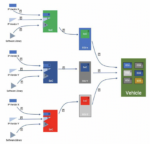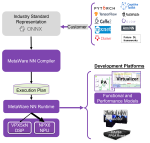As the focal point of the TSMC OIP ecosystem, TSMC has been driving important initiatives over the last few years to bring multi-die systems to the mainstream. As the world is moving quickly toward Generative AI technology and AI-based systems, multi-die and chiplet-based implementations are becoming essential. TSMC recently… Read More
Transformers Transforming the Field of Computer Vision
Over the last few years, transformers have been fundamentally changing the nature of deep learning models, revolutionizing the field of artificial intelligence. Transformers introduce an attention mechanism that allows models to weigh the importance of different elements in an input sequence. Unlike traditional deep learning… Read More
Power Analysis from Software to Architecture to Signoff
SoC designs use many levels of design abstraction during their journey from ideation to implementation, and now it’s possible to perform power analysis quite early in the design process. I had a call with William Ruby, Director of Porduct Marketing – Synopsys Low Power Solution to hear what they’ve engineered… Read More
WEBINAR: Why Rigorous Testing is So Important for PCI Express 6.0
In the age of rapid technological innovation, hyperscale datacenters are evolving at a breakneck pace. With the continued advancements in CPUs, GPUs, accelerators, and switches, faster data transfers are now paramount. At the forefront of this advancement is PCI Express (PCIe®), which has become the de-facto standard of interconnect… Read More
Synopsys Expands Synopsys.ai EDA Suite with Full-Stack Big Data Analytics Solution
More than two years ago, Synopsys launched its AI-driven design space optimization (DSO.ai) capability. It is part of the company’s Synopsys.ai EDA suite, an outcome of its overarching AI initiative. Since then, DSO.ai has boosted designer productivity and has been leveraged for 270 production tape-outs. DSO.ai uses machine… Read More
ISO 21434 for Cybersecurity-Aware SoC Development
The automotive industry is undergoing a remarkable transformation, with vehicles becoming more connected, automated, and reliant on software. While these advancements promise convenience, comfort and efficiency to the consumers, the nature and complexity of the technologies also raise concerns for functional safety … Read More
Key MAC Considerations for the Road to 1.6T Ethernet Success
Ethernet’s continual adaptation to meet the demands of a data-rich, interconnected world can be credited to the two axes along which its evolution has been propelled. The first axis emphasizes Ethernet’s role in enabling precise and reliable control over interconnected systems. As industries embrace automation… Read More
AMD Puts Synopsys AI Verification Tools to the Test
The various algorithms that comprise artificial intelligence (AI) are finding their way into the chip design flow. What is driving a lot of this work is the complexity explosion of new chip designs required to accelerate advanced AI algorithms. It turns out AI is both the problem and the solution in this case. AI can be used to cut … Read More
Next-Gen AI Engine for Intelligent Vision Applications
Artificial Intelligence (AI) has witnessed explosive growth in applications across various industries, ranging from autonomous vehicles and natural language processing to computer vision and robotics. The AI embedded semiconductor market is projected to reach $800 billion by year 2030. Compare this with just $48 billion… Read More
VC Formal Enabled QED Proofs on a RISC-V Core
The Synopsys VC Formal group have a real talent for finding industry speakers to talk on illuminating outside-the-box-topics in formal verification. Not too long ago I covered an Intel talk of this kind. A recent webinar highlighted use of formal methods used together with a cool technique I have covered elsewhere called Quick… Read More










